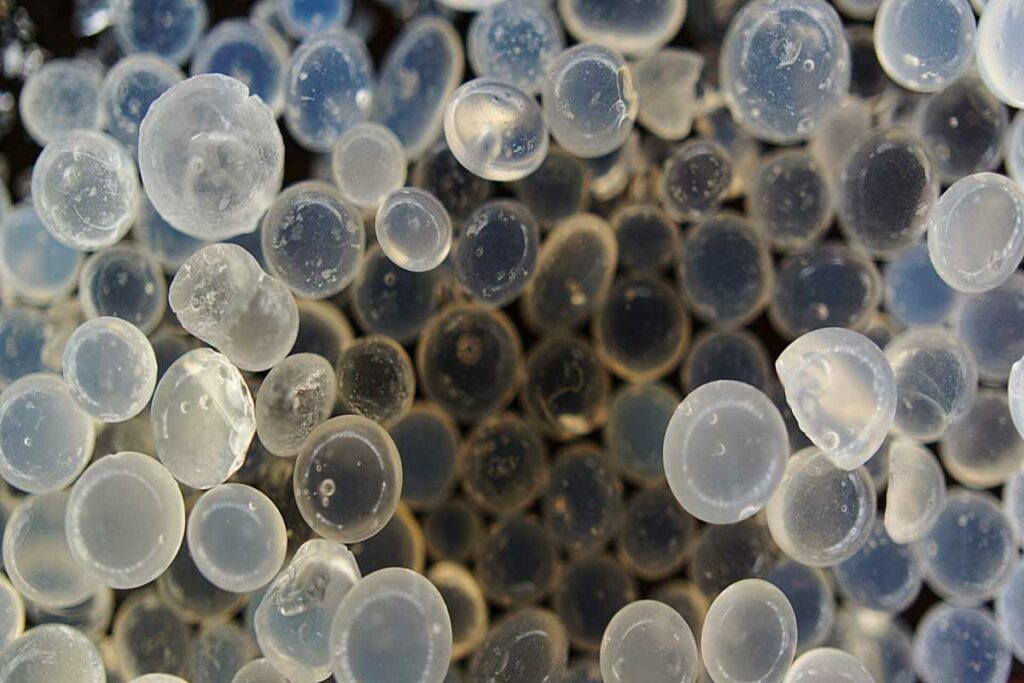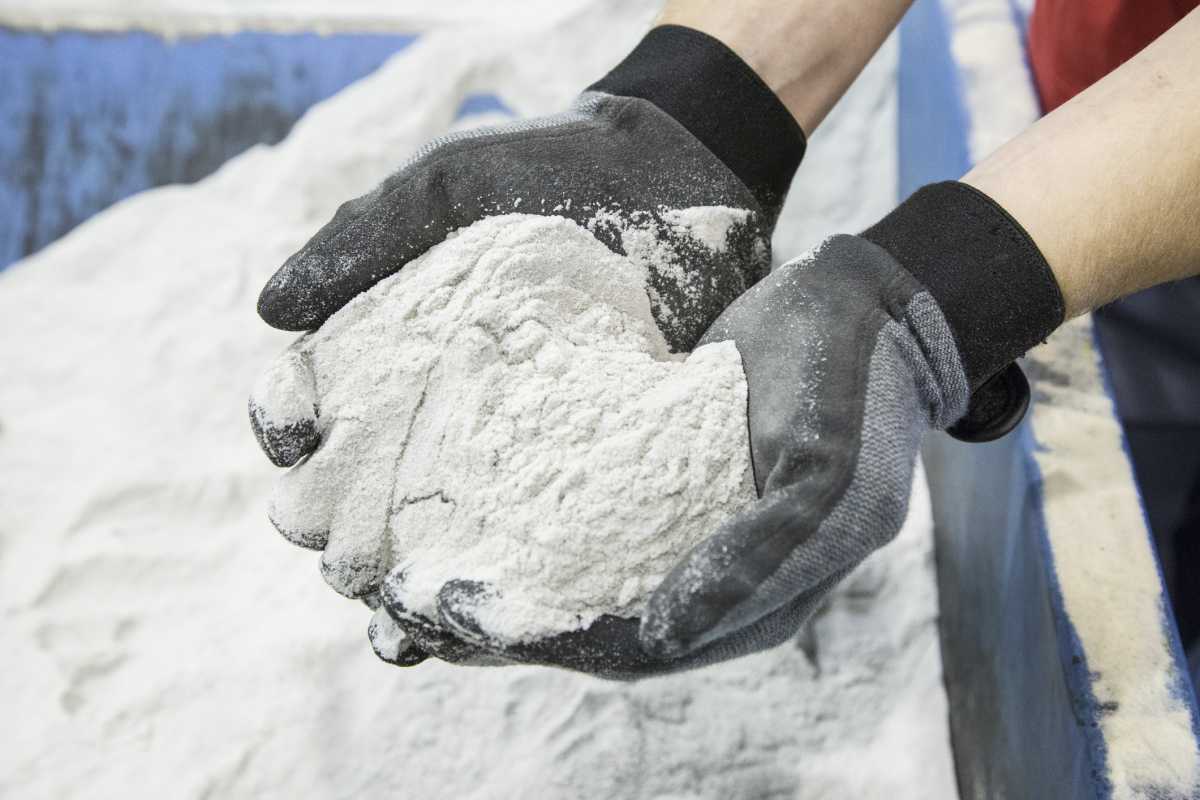Silica is an important nutrient for your cannabis plant, but how much is too much Silica? The plant needs Silica, among other nutrients, to flourish and yield. The plant’s entire survival relies on your ability to avail the proper nutrients when the plant needs them.
It begins with getting the suitable substrate, and when most novice growers get this right, together with main macronutrients (N-P-K), their plants can survive and afford them a yield.
(This post contains affiliate links. If you buy anything via the links, we will get a commission at no cost to you)
That’s what beginner growers want. To have a bud they grew in their bong. And it elicits a good feeling, but after you’ve grown a few times, you want to get the best out of each grow.
You go for the extra micronutrients, do a bit of training, and just avail more resources to the plant to yield high-quality buds. Without proper nutrition, your plant may suffer nutrient deficiencies.
Giving your plant silica is one way to add it the extra strength to thrive in every phase of its growth and yield better.
Among other functions, silica helps your plant build stronger cell walls and thickens the plant’s stems.
Thus, it is vital in developing and maintaining a sturdy plant structure. A robust plant framework can shoulder more buds.
Silica helps the plant grow bigger stems and robust branches that enhance water and nutrient uptake, hastening the plant’s growth and development.
As you’ll learn, bigger plants yield more than dwarf plants because they’re robust in structure, have more bud sites, and can remain erect when the bud sites bring forth a bumper yield.
Silica can boost your yield considerably, but you must use it with caution. Sometimes you give the plant more than it should take. And it could hurt your plant. Let’s explore how it does it!
Table of Contents
Can You Give A Plant Too Much Silica?
Silica is vital for the growth and development of the plant, but you shouldn’t use too much of it. Silica is alkaline. When you give the plant too much silica, it raises the pH of the soil, causing nutrient lockout.
You must stick to the recommended dosage, even when you think your plants need more of it. Excess silica can also do the opposite— make the plants more brittle.
When your plants aren’t sturdy, they become risky to train, and any bending can snap them.
Check the pH levels when using silica, and when it’s too high, use pH down to level down. You don’t want to lockout other essential micronutrients from the plant.
Keeping the pH within range is an essential skill when feeding your plants nutrients.
No products found.
How To Dose Silica When Feeding Your Cannabis Plants
According to Maximum Yield, you should start the young plants on 20% to 30% of the general feeding dosage and increase it gradually as the plants become more robust.
For growers who prefer a straightforward answer, follow the directions on the product.
You can begin on the low with soluble silica for the seedlings, or immediately you root the cuttings and later upgrade your measurements for the older plants.
Later, you can change the dosage to meet the plant’s needs.
When you approach harvesting, you can reduce the amount of silica you feed them to keep the pH in check. It also makes sense because the plant shall have stopped growing.
Even while supplementing Silica, be on the lookout for the plant’s reaction. Silica is highly alkaline, and you need to know what the plant is telling you on its leaves.
I wrote this in-depth article to help you know what your cannabis plant is telling you when the Leaves Deform and the Buds Turn Brown and Crispy. It will help you figure out what’s ailing your plant.
Benefits Of Silica For Cannabis Plants
Though silica should make a vital addition to your feeding regimen, it isn’t one of the essential nutrients for cannabis. That shouldn’t make you think of it any less.
Yes, your plants can do without it, but its presence can make them grow faster and yield more buds.
Here are reasons why you should consider using silica the next time you grow weed;
Silica Helps In Creating Stronger Plant Cell Walls
Silica helps your plants to grow stronger cell walls. Cells are the building blocks of the plant’s structural framework. Thus, when the cell walls are sturdier, the whole plant becomes sturdy.
Stronger cell walls also help to protect the plant during training.
Weak stems snap when bent, but with silica, the stems aren’t only sturdy enough to withstand training stress, they can also withstand nibbling insects, keeping your plant safe.
Silica Improves The Plant’s Immunity To Environmental Stress
Plants, unlike animals, have little use for their flight hormones, that’s if they have any. They can’t move from one place to the next to evade the extremities of their habitat.
Thus, they need to endure most of the weather extremities to thrive and produce. Silica helps them survive the harshest conditions, like extremely cold nights and hot days for outdoor growers.
Silica also helps your plant deal with drought, and when grown indoors, inconsistent watering schedules.

The gaps within your watering cycles can sometimes leave your plants thirsty or dehydrated. Silica coats the leaves, thus limiting the amount of water lost through the stomata.
Silica Improves Metabolic Functions Of The Plant
Silica helps improve chlorophyll content in the leaves and improves the rate of photosynthesis.
The plants need green leaves to metabolize at the optimum, and silica makes your weed plants greener than they normally would without silica.
The presence of more chlorophyll in the leaves also means that your plant can take advantage of other factors of production to improve yield and bud quality.
Silica also ensures the plant’s water and nutrient uptake is at the optimum by making your plants’ roots, stem, and branches grow bigger.
When you perk the lights up to the sweet range, your plants can utilize your fertilizers well after you feed them and the oh-so-essential CO2. This results in a robust plant with healthy leaves.
Revved-up metabolism is good for the plant. They grow faster and yield more because they aren’t stagnated by lack (or dwindling supply) of essential resources.
No products found.
Silica Improves The Plant’s Resistance To Pests And Pathogens
When pathogens attack the plant, they rely on the weaknesses of the plant’s cell walls to spread.
If they can easily make their way into the plant, they can conquer the whole plant and plague it with maladies.
When the plant is hurt, for instance, from supercropping stress, silica forms an additional mineral barrier around the wound to shut pathogens out.
The hardened ring around the plant’s affected areas also makes it easier to control pathogens as they’re isolated in small patches.
The pathogens are left circled for extermination; they can neither hide nor infiltrate the plant’s stem further.
When foliar fed, silica strengthens the leaves’ cell walls, making it tougher for the pests to feed on them. To use silica is to shield your plants against leaf-biting insects!
How Do You Feed Cannabis Plants Silica?
Silica can be given as you do regular feeds. Scoop a ½ to 1 cup of powdered silica for 8 gallons of potting soil.
You can also use it as a foliar spray. When you use it in the soil, make sure not to mix it with other nutrients as that might cause bioavailability issues.
Apply silica when you don’t usually give other feeds to eliminate any issues that could arise.
Some growers love giving silica as a foliar spray because you don’t have to worry about bioavailability. The plant takes it through the stomata on the leaves and utilizes it as necessary.
Do You Use Silica All Through Flower?
Silica can be used throughout the growth stages. It doesn’t harm your flowering plants if you keep the dosage within range. However, other growers advise stopping silica after the third week of flowering because the plant shall have stopped structural growth.
Organic Sources Of Silica For Plants
Silica is present in the soil and occurs in various compounds. When you plant your cannabis in soil, the plant will already have access to silica because silica forms a part of the earth’s crust.
If you grow in hydro, your plant won’t have access to silica until you supplement it. Other organic sources of silica include;
Slag: Slag is an industrial byproduct of iron and alloy processing. It is composed of metal oxides and silicon dioxide. Its high solubility makes it favorable for your plants.
Sodium silicates: Also known as water glass, sodium silicates are a viable source of silica for garden use.
Thermo-Phosphate fertilizers: Thermo-phosphate fertilizers are a good source of silica. Though expensive and hard to find, they’re very effective and can considerably increase your plant’s growth and yield.
Calcium silicates: If you’re thinking of silica for soil absorption, calcium silicates are for you. Use them in the roots, and let your plant siphon all the goodness to strengthen the stems and hasten nutrient and water uptake.
When Should I Stop Using Silica?
When to stop using silica is mostly a matter of preference. Other growers use silica when the plant is in its most active structural growth stages and stop weeks into flowering. Silica is harmless, and can be used from seedlings (or cloning), vegging, and flowering through to harvest.
If you can keep the pH within range, you can use it throughout the plant’s life— from seedlings to harvest!
How Long Does Silica Blast Last?
When sealed, a silica blast has a shelf life of one year. Once opened, the silica blast can only last six months. If your silica has been sitting opened in some cabinet for over six months, it’s probably not suitable for garden use anymore.
In conclusion, silica is an important resource for your plant’s growth and yield. It helps your plant grow robust stems and branches to withstand the weight of big buds.
It also promotes water and nutrient uptake and shields your plants against pests and pathogens.
Though harmless in the recommended dosage, when you overfeed your plants Silica, it can alter the pH range of your grow medium and cause a nutrient lockout.
Overfeeding silica can also make your plants brittle, which can make your plants snap when you’re training them.
External sources:
- https://www.maximumyield.com/simply-silica/2/1077#:~:text=If%20using%20silica%20as%20both,not%20to%20overdose%20the%20plants.&text=Silica%20is%20alkaline%20by%20nature,thoroughly%20mixed%20into%20the%20water.
- https://www.thegardenprepper.com/organic-source-of-silica-for-plants/
- https://www.royalqueenseeds.com/blog-using-silicon-supplements-to-cultivate-healthier-cannabis-plants-n199

